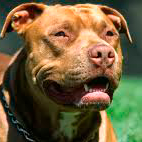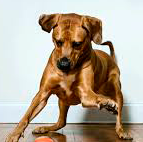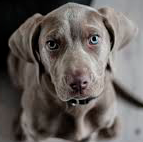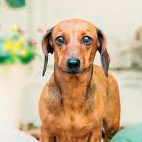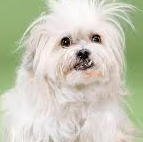Tips on how to buy a Yorkshire Terrier
Buying a dog is a matter of confidence. Don’t let anyone cheat you!
There are many sources of information’s. The best address is probably the Swiss Yorkshire Terrier Club’s secretary office. The phone number is +41 56 401 59 83 that can be reach best in the afternoon local time (please speak German). Or you can write us (please write in German).
The breeders who are members of the Swiss Yorkshire Terrier Club make great efforts to breed vivacious and most of all healthy Yorkshire Terriers. We stopped assessing competing unional breeders a long time ago. We leave that up to you.
Read this page to the end. Even better, print it. The purpose of this web page is to make sure that you buy a good Yorkshire Terrier. There is nothing worse than a dog, with which you are unhappy for years later on. We designed all of our web pages to inform the friends of Yorkshire Terriers extensively and in a wide scope.
Return to this page after viewing a link, using the “BACK”-button of your web browser. Try it with this link: “Escort” (Originally in German: “Zum Geleit”), by Nobel prize winner Konrad Lorenz, or try it with “book hints”.
What does a Yorkshire Terrier cost?
At reliable breeders, who do not save money at de-worming, vaccinations and cleanness of the dogs and breeding have varying prices. Usually they range between 1600 and 2000 Swiss Francs.
Of course in every breed there occasionally are dogs, which have cosmetic flaws and therefore do not meet the breeding standard. Reliable breeders usually sell such dogs cheaper to a good place.
Prices as high as 3000 Swiss Francs and more are only justified, if the dog is a prospective breeding or exhibition dog. Such dogs are sold only at an age of about 8 months. This is a precaution, since at that age the dog has got its second teeth and anatomical defects are visible to non-professional breeders as well as to the buyer.
Apart from this, at that age, reports of judges can be shown. These reports comment the approximation of the young dog to the breeding standard and may absolutely justify such a high price.
The price of grown dogs with proven winner and champion certificates (see standards for championships) may grow immensely.
What do I have to consider at the breeder buying a dog?
In a good breed you will find friendly and lively Yorkies. At experienced breeders you will find toys, with which the Yorkies, being former ratcatchers, can live up their hunting instincts in a natural way.
Play with the pups, using a squeaking rubber animal or a ball. Please bear in mind, that prey does flee, it does not attack. Therefore throw the toys away from the dog, not toward it. Don’t put your hands above the pup’s head and do not lift it from the ground.
Of course, at the age of 10 weeks, the pups must have been vaccinated for the first time and that they have been de-wormed several times already.
Reliable breeders do not offer or sell pups under the age of 10 weeks. Alone the fact, that the vaccination against Parvovirus can be made only at the age of 10 weeks, makes many reliable breeders wait for that age before selling a Yorkie.
You can weigh 10 week old pups. Every breeder has a pair of scales. You can estimate the grown-up size and weight of a Yorkie by weighing it at the age of 10 weeks.
There is a reliable rule of thumb: The grownup-weight of a 10 week old Yorkie will be the present weight multiplied times two plus/minus 250 grams. This means, that a pup with the weight of 1300 grams at the age of 10 weeks will rather have a weight of 2800 grams than 2400 grams.
However, if the pup weighs below 1000 grams, for example 700 grams, then it will rather grow only to a weight of 1400 grams (or less) instead of 1800 grams. In such cases, the characteristic of dwarf growth shows already in the pup-age.
At the age between eight and thirteen weeks, many pups put on about 100 grams per week. You may want to take a look at the Yorkshire Terrier pedigree standards (in german) on our web pages.
Good Yorkshire Terriers show already as pups with elevated tails. The tail may be regarded as a parameter showing the psychical condition of the dog. Only insecure and timid dogs pinch their tails between their legs.
At this age, the dog’s back is sturdy and as straight as a line. At the rear, it is not higher (overbuilt).
The pup should be able to hold its ears almost totally erect. The ears may not stand far apart from each other, which would be a case of too wide ear bases. They also should not hang limply. If it still does, a price reduction would be justified. Good breeders shave the upper third of the hair at the ears, as it is standard.
It should not be necessary to count the dog’s hair one by one. Either there is enough hair, or there are too few. In the latter case no improvement is possible, even with special treatment, since the reason for too few hairs is heredity. The hair is decisive concerning the later look of the Yorkshire Terrier. Too few hairs should also lead to a price reduction.
By the way, if the dog has not enough hair, but long ones, the long hair does not indicate that the problem of too few hairs will improve, as people often falsely believe. The single hairs should not be too thin.
Ask the breeder how many meals the pup gets every day and what the breeder is feeding. If the breeder feeds only milk and bread, you should leave the place immediately. A pup has to be fed four times a day, and only with special pup food. Only very few Yorkies are able to eat milk, and if they do, only buttermilk.
The face of the Yorkshire Terrier should not be too long. It should not bear any resemblance to a dachshund.
Let the breeder show you the genealogical table with the tattoo number noted in it. Compare the tattoo number written in the table with the tattoo in the pup’s ear.
You should not have to ask everything, but the breeder should show you all these things without being asked.
If the dog’s genealogical table should still be at the pedigree writer of the club, the breeder should be able to show you the litter announcement form with the necessary data. On every litter announcement form of the Swiss Yorkshire Terrier Club you will find a veterinarian’s confirmation, certifying the good healthy condition of the pups.
The Swiss Yorkshire Terrier Club has these standards as the first special club of pedigree dogs in the Switzerland since the foundation of the club. These standards serve as an additional security for the customer. Without the signature and the stamp of a veterinarian on the litter announcement, no pedigrees are given out for pups.
Successful breeders like to show you the mother of the pups and its references like reports of exhibitions, winner’s certificates or breeding admissions.
Before you sign a contract of sale and take your new love with you, every good breeder will show you the teeth respectively the correct teeth positions. The pups that fulfil the standards may not have upper or lower jaws that are jutting out, which too, would lead to a price reduction.
Beside all this, the good breeder shows you the testicles of the male dog. This should be don by the breeder without your asking if you are allowed to control those tiny things.
Every flaw has to be recorded in the contract of sale. Every single one has an influence on a better price.
If the pedigree is still at the pedigree recording department, a note should be made in the contract of sale that the breeder will send this document to you by registered mail.
Let the breeder give you food for the dog that will last for a few days or buy a whole sack of dogfood of from him. If you want to change the brand of dogfood, do this slowly over a period of seven days. Doing so, you will avoid digesting disorders, which might even become chronic. Such illnesses might lead to permanent growth- or development disorders.
The Differences between breeders
We distinguish between non-professional (layman) breeder, hobby breeder, dog breeder, dog breeder à la discretion, dog reproducer and dog dealer.
1. The non-professional (layman) breeder often owns only one or two breeding animals and has breeding experience of only few births. He also likes to call himself a breeding enthusiast and often complains about competing successfully hobby and other more active breeders.
2. The hobby breeder owns only a few dogs, often pursues his breeding in a large scale, being member in an international breeding union. Demonstrably successful breeders are also being regarded as breeding enthusiasts.
3. The dog breeder owns various breeding animals and many times male dogs for covering as well. In most cases he has a breeding experience of many years. He pursues his breeding under the supervision of the competent cantonal veterinary department. These breeders too are regarded as breeding enthusiasts, as long as they do not breed more than two or three different races.
4. The breeder à la discretion seems to have only a few breeding dogs and does not let anyone take a closer look at his breeding activities. He does not let anyone supervise his breeding, but always has a lot of pups …
5. The dog reproducer looks for a covering opportunity for his bitch “just around the corner”, where it is possibly for free. He is not interested in international breeding organizations. The commercial interests suppress the first breeding rule: The patronage of the healthy pedigree dog. More and more pups are far away from the typical race standard or they even have anatomical defects. No references can be shown.
6. The dog dealer has an official licence and imports dogs legally. Fortunately, there are only a few of these left in Switzerland.
7. Dog factories with enormous mass animal keeping, as they are known in foreign countries are not known in Switzerland.
We also have an open ear for you, if you come across people, who do not deserve to be called breeders. Please inform us, we want to know about these people too.
The dubious tricks of breeders
They guarantee you the preferred height verbally, maybe even in writing, knowing, that in one year you do not want to part from your dog, because you grew so fond of it.
They put a small, sweet puppet into your hand, saying “You have to love such babies, don’t you think?”. There is no free comparison or selection among the pups for you.
He points out a date very kindly, although you only announced a noncommittal visit on the phone. The goal is to make the deal as soon and as quick as possible. No instructions, and tips for care, keeping and feeding of the dog are given, and soon “the paper” has changed hands.
The mother of the pups cannot or will not be shown. The suspicion grows, that the dogs à la discretion are animals imported illegally from the former eastern European countries, or the Netherlands, Belgium and France.
By the way, reliable breeders show at least the mother of the pups. The dogs are tattooed and the tattoo number is registered in the pedigree. Remember: Parental animals usually listen when being called by their names.
The pups are offered cheaper, but without a pedigree or genealogical table (documents) on whatever pretext. Something is definitely wrong then. Maybe the breeder holds back the papers to use them for selling imported pups as pups being bred by the breeder.
The breeder relies on the papers and claims that these are the one and only internationally accepted documents in the world. Often, this statement is being used to sell a dog at an excessive price. To make this statement true, the breeder would have to abolish the freedom of founding associations in a democratic constitutional state, change the fundamental constitution of the country and ban the freedom of action and the freedom of self decision for every citizen. This argument is widely spread, because certain commercially oriented groups like to use the suggestion, that there is a state-owned monopoly for the breeding of dogs, cats and other unions dealing with the breeding of small and medium sized animals.
Not the pedigree of the dog, nor the position of the breeder in society decide about the real value of a pedigree dog, but the convincing breeding achievement, respectively the bred pedigree dog itself.
If other, competing breeders are being run down by the breeder you are visiting, to avoid an eventual comparison to other breeders, you should set out to take a look at the other breeding. Buying a dog is a matter of confidence, do not let anyone cheat you!
According to article 16 in the breeding regulations of the Swiss Yorkshire Terrier Club, dubious selling methods are being punished.










